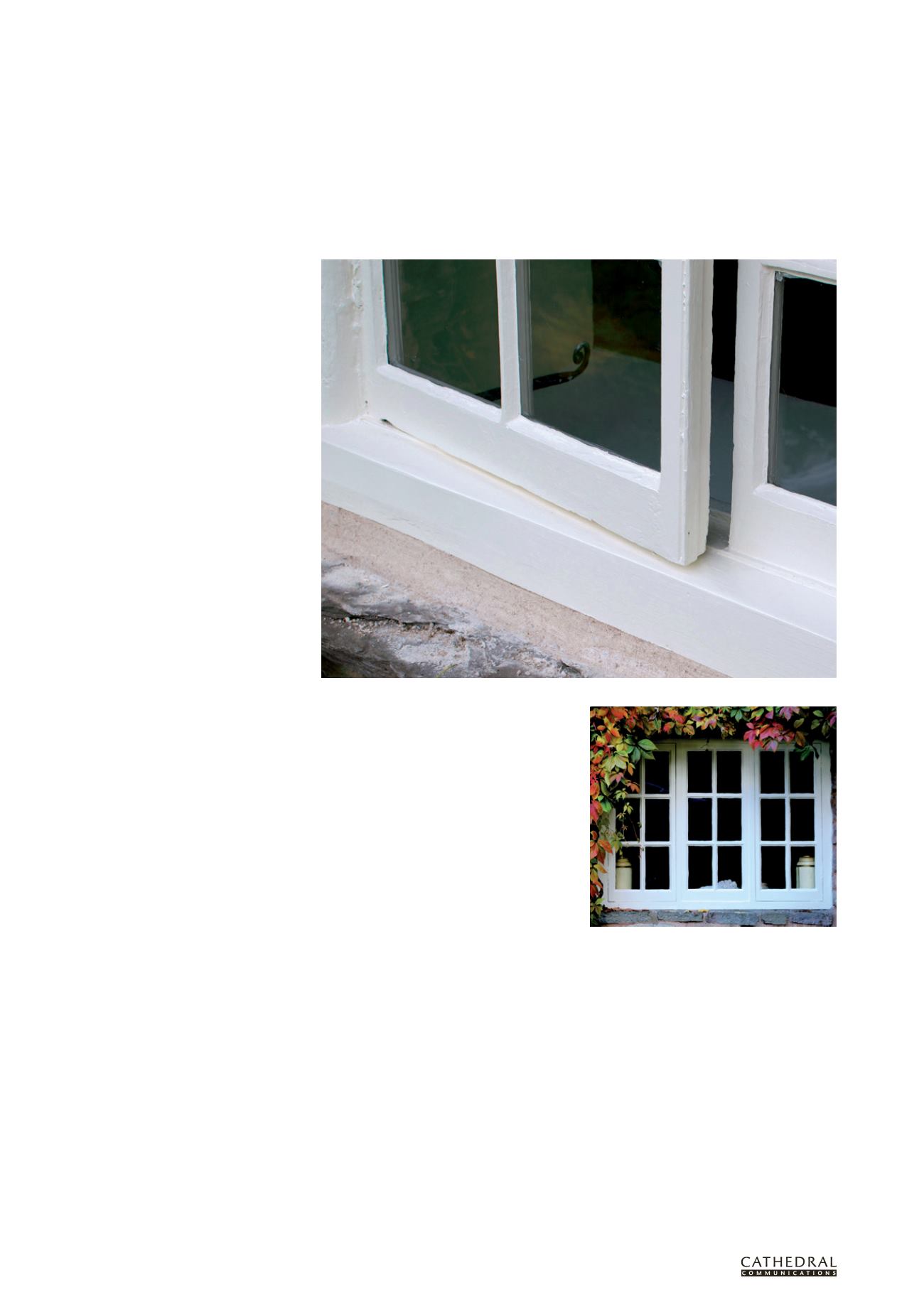

1 4 4
T H E B U I L D I N G C O N S E R VAT I O N D I R E C T O R Y 2 0 1 5
T W E N T Y S E C O N D E D I T I O N
SERV I CES & TREATMENT :
PROTEC T I ON & REMED I AL TREATMENT
4.1
LINSEED OIL PAINTS AND MASTICS
Applications and limitations
PETER KACZMAR
A
T THE
start of the last century wood-
coating technology enjoyed a period of
relative stability when little energy was
expended on developing new or improved
coatings. Then, joinery was manufactured
from large-sectioned, slow-grown wood and
protected with flexible lead-based paints
which seldom showed the types of failure
that have become so characteristic of their
modern equivalents.
Based on the frequency of observed
failures, one could be forgiven for saying
that today’s coating technology seems to
have taken a step backward. This apparent
decline in the performance of wood coatings
is often blamed on shifts in attitudes in
silviculture as timber made the transition
from abundant building commodity to scarce
and valuable resource. The consequence was
that the definitions of acceptable timber
quality were redefined to maximise the
use of a shrinking resource. This in turn
placed seemingly unrealistic demands on
existing coatings, which were expected
to perform well despite the fact that the
nature of the substrate had changed.
This is reflected in our historic buildings,
where the original woodwork was generally
manufactured from large-sectioned,
slow-grown, and hence stable, temperate
hardwoods which do not exert the same
demands on paint coatings as today’s more
rapidly grown counterparts.
In reality, this is an oversimplification
because it does not take into account
legislative pressures against the use of lead
paints, which began as early as 1921 when
the International Labour Organisation, in
recognition of the toxicity of these products,
implemented a convention restricting the
use of white lead (basic lead carbonate) in
paints. These concerns culminated in the
establishment of environmental legislation
implemented by the European Commission
REACH (registration, evaluation,
authorisation and restriction of chemical
substances) regulations in 2006. The REACH
regulations allow the manufacture and use
of white-lead paint only under licence in
controlled and special circumstances for
the repair and restoration of Grade I and
II* listed historic buildings (Category A B
and C(S) in Scotland) to enable the use of
authentic finishes. Strict regulations apply
to its use and the general sale of lead paint in
the UK is prohibited.
LEAD-FREE PAINTS
Against this backdrop, the wood coatings
industry was forced to adapt and
manufacturers responded by developing new
types of coating, including some systems in
which the lead component (lead carbonate)
was substituted with titanium dioxide as the
alternative pigment.
One of the main advantages of lead
carbonate is that it reacts with linseed oil
to produce fatty acid soaps which are tough
and elastic and also have good wetting
properties. This is arguably the principal
reason why white lead was so widely used for
the protection of wood substrates: it could
produce a resilient, relatively impermeable
protective film capable of responding to
in-service movements of the wood caused
by changes in air humidity and substrate
moisture content.
The inherent ability of the old lead-based
paints to accommodate movement in the
substrate was the key to their success when
used to protect exterior wood. Formulation
technology has responded to restrictions
in their use by developing alternative
formulations, among them the acrylic and
vinyl-based systems and polyester products
which led to the development of ‘traditional’
alkyd systems.
THE RISE OF ‘COMPLIANT COATINGS’
In many ways history is now repeating itself:
in just the same way as health and safety
controls signalled a radical change in the
direction of developments during the 20th
century, the imposition of environmental
legislation set into motion further changes
at the start of the 21st. The recent changes
stem from two European directives on
volatile organic compounds (VOCs). The
first, the Solvent Emission Directive (SED)
1999/13/EC, has been fully implemented
since 2007 and places limits on installation
or plant facilities according to total
annual VOC emissions. The second, the
Paints Directive (PD/DECO) 2004/42/EC,
applies to coatings for use on buildings,
their fittings and associated structures as
well as products for vehicle refinishing. It
divides the coatings into 12 subcategories
and sets VOC limits for each one.
These directives have promoted the
A timber casement window painted with a linseed oil paint (Photo: Matthew Evans, Welsh Heritage Décor)
















